If you want to grow a tough but beautiful perennial that is going to stand up to just about anything your yard can throw at it, it is hard to go wrong with yarrow. This plant also offers some unique benefits for your garden that you cannot get with just any perennial.
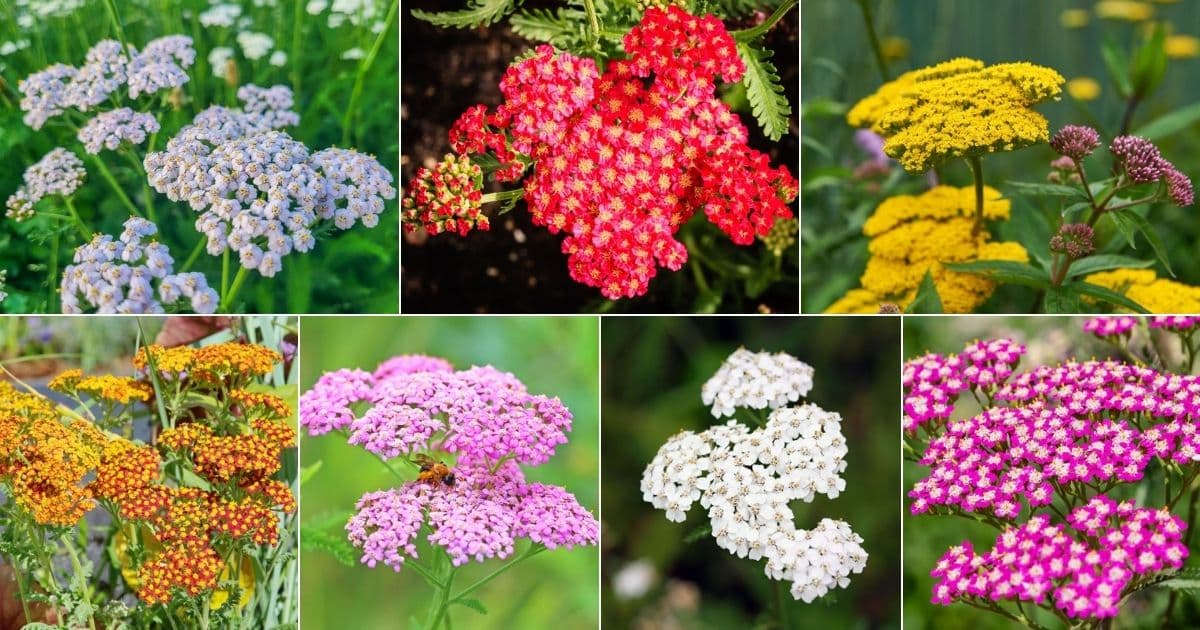
This post will teach you everything you need to know to get started growing these flowers in your garden. You can jump to the section you want in the advanced jump below or read the full guide.
Jump to:
- What Are Yarrows?
- Yarrow Basics
- Where Do Yarrows Grow?
- Why Grow Yarrows?
- Yarrow Landscaping Ideas
- Recommended Yarrow Varieties
- When Does Yarrow Bloom?
- How Long Do Yarrows Bloom?
- When to Plant Yarrows
- Ideal Growing Conditions for Yarrows
- How to Plant Yarrows
- How to Care for Yarrows
- How to Divide and Transplant Yarrows
- Recommended Planting Combinations for Yarrow
- Frequently Asked Questions About Growing Yarrows
- Where to Buy Yarrows
What Are Yarrows?
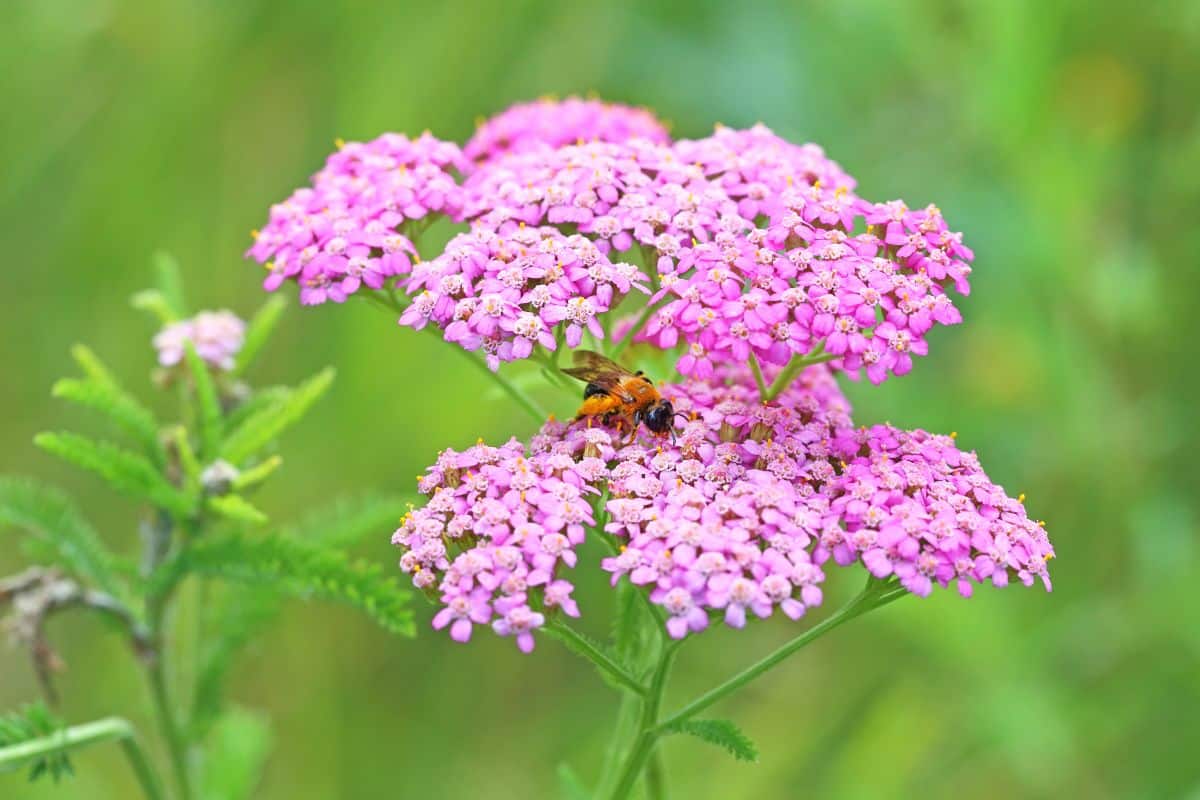
The name “yarrows” refers broadly to the genus of plants called Achillea, which is part of the family Asteraceae, also known as the daisy family.
Despite being part of that family, yarrows do not look anything like asters or daisies. Sometimes, when people say “yarrow,” they also are referring specifically to Achillea millefolium, which is the common yarrow.
Yarrows produce clusters of tiny flowers that are flat on top with an appearance similar to Queen Anne’s Lace or hemlock. While a variety of colors are possible for yarrow blooms, typically, these flowers are yellow.
According to legend, the warriors who fought alongside Achilles made use of yarrow plants to stop bleeding. That is why the name of the genus is Achillea. It also explains why sometimes, yarrow is referred to as “bloodwort” or “allheal.”
Yarrow Basics
| Zones: | 3-9 |
| Blooming season: | Summer |
| Expected height: | Up to 3 feet |
| Soil: | Well-drained |
| Sun: | Full |
Where Do Yarrows Grow?
Yarrows are widely grown throughout the world, and are native to Europe, North America and Asia. In Australia and New Zealand, it is common to cultivate yarrow to feed to livestock.
Why Grow Yarrows?
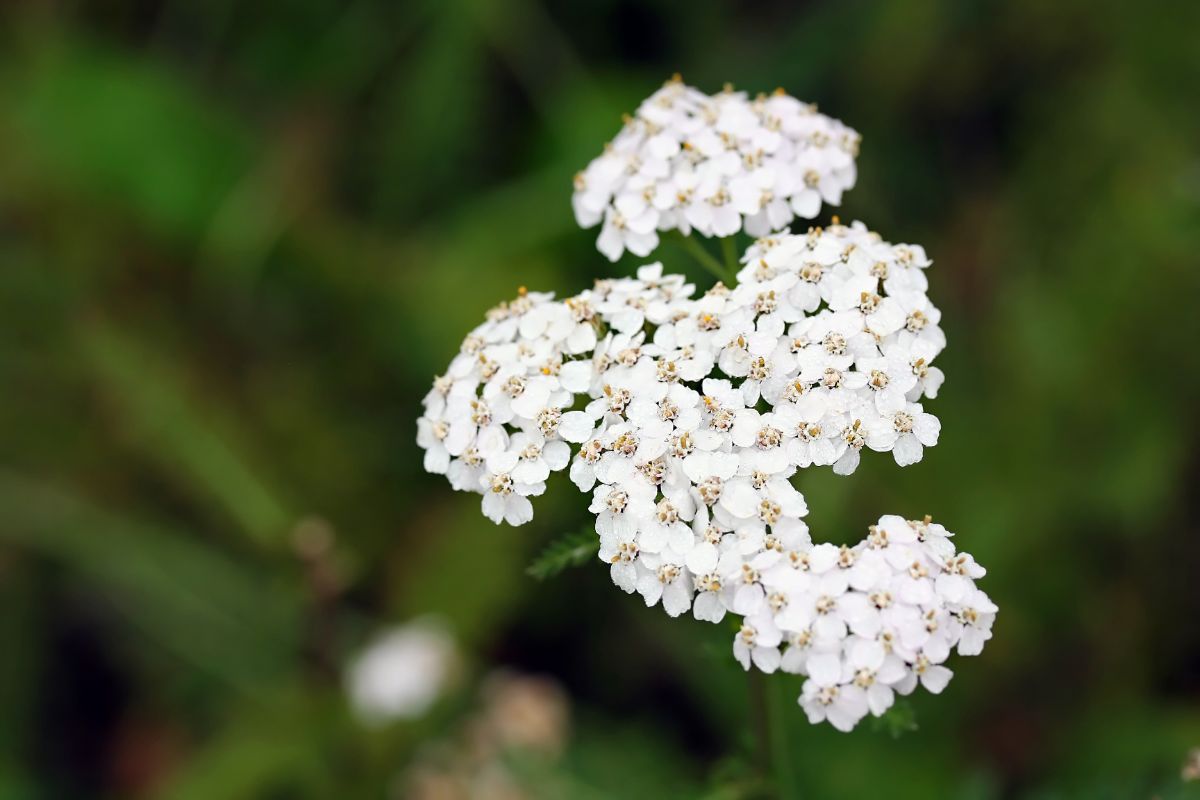
Yarrow is arguably one of the most beneficial plants for your garden. Its ornamental beauty is just one reason to plant it. Here are a bunch more:
- Long bloom period. You can enjoy many weeks of flowers between spring and autumn on yarrows, especially with deadheading.
- Attract more of what you like and less of what you don’t. Pollinators like butterflies and bees love yarrow, but UIC Heritage Garden points out that ants, flies and beetles do not. Also, some insects that prey on garden pests like yarrow, so that is another way in which yarrow can benefit the plants surrounding it. We should also note that this source says that beneficial beetles like yarrow, including ladybugs.
- Yarrows are deer-resistant and slug-resistant. Gardeners consistently report great results in this area.
- Support compost production. Do you make your own compost? If so, you can hasten the process by adding yarrow, which helps to promote rotting.
- Yarrow work great as cut flowers to enhance arrangements. You can use it fresh or dried.
- The root systems of yarrow plants do well to help prevent soil erosion. Also, it flourishes in soil conditions that other plants often cannot stand.
- Yarrow is a drought-resistant plant, and one of the best you can pick for dry regions.
All told, yarrow is an underrated perennial that deserves a lot more love! Beginner gardeners in particular will love how easy and stress-free it is.
Yarrow Landscaping Ideas
Below are some of the ways you can use yarrow to enhance your landscaping:
- Rock garden: Because this perennial plant actually prefers dry and sandy soil, it is perfect for adding to a rock garden.
- Cottage garden: The flat flower heads of yarrow plants are highly compatible with the look of a cottage garden.
- Pollinator garden: Plant yarrows among other flowers that pollinators enjoy to fill your garden with butterflies and bees. The flat flower clusters are kind of like landing pads in your butterfly gardens.
- Border: There is some contention about whether or not yarrow makes a suitable plant for a border since it can sometimes get leggy and floppy. If you are willing to keep up with dividing and staking, however, it might work out. If yarrows tend to stay upright in your climate, it might also be a good choice.
- Groundcover: There are yarrow species that grow more like mats. These can be used as groundcover, and are great for covering up barren patches of poor soil.
- Herb gardens: While yarrow is a suitable choice for any perennial garden, it is also classified as an herb. So, you can plant it in your herb garden both to beautify it and to protect the other herbs you are growing from pests.
Recommended Yarrow Varieties
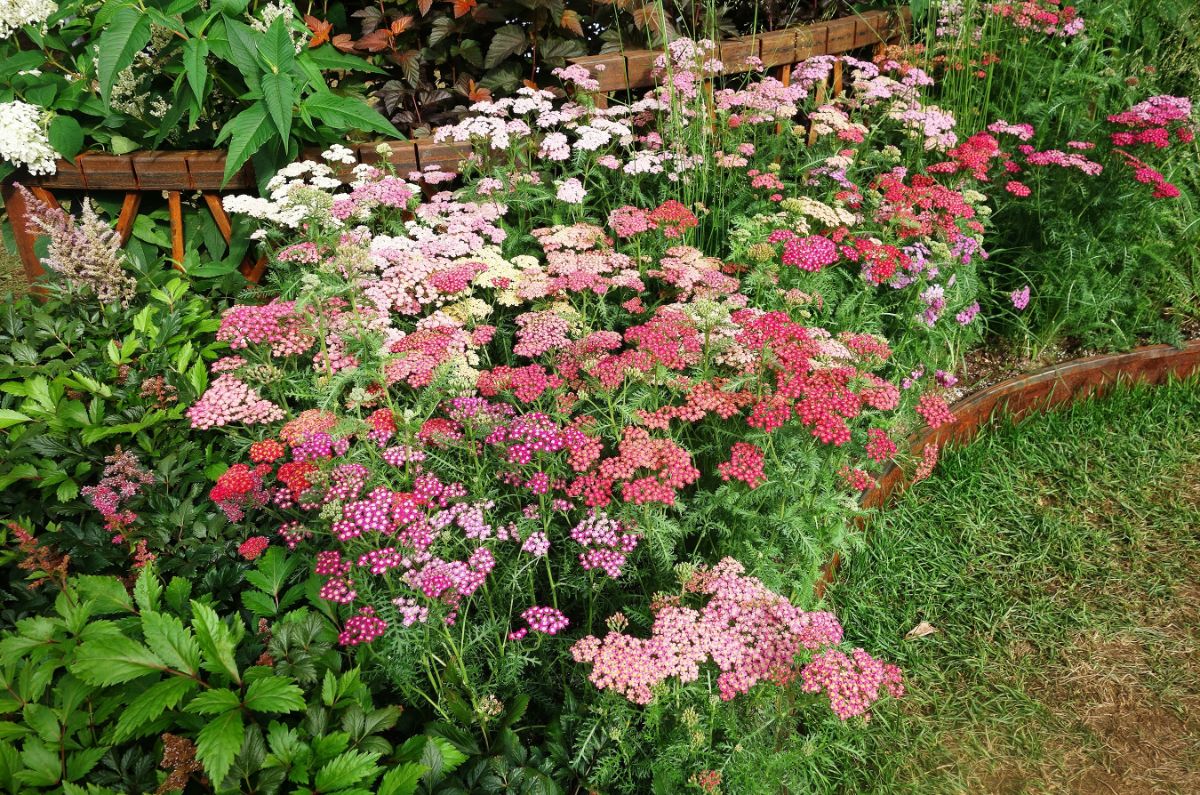
There are quite a few lovely Achillea varieties that you can grow in your garden. Make sure when you choose yours, you research and do not pick something too aggressive for your area.
- Greek: If you are looking for a type of white yarrow, you will love the white flowers of this evergreen cultivar. The gray-green foliage is often described as “silver.” Its growth habit makes it suitable as a groundcover.
- Moonshine: This type of yarrow grows to around 18”, and features yellow blooms with gray plant leaves. It is a favorite among novice and master gardeners alike for its long bloom period. If you keep deadheading it, it will reward you with blossoms throughout summer.
- Little Moonshine: Those searching for dwarf varieties of yarrow will appreciate the smaller version of Moonshine. The plant height does not exceed 12 inches or so, which means it has a lower profile. But it will also provide you with the same long bloom period and gorgeous sunny yellow flowers.
- High Sierra Dwarf: These compact plants grow fast and produce white flowers and evergreen foliage. You can look forward to them flowering in spring and summer.
- Pink Grapefruit: As the name would have you guess, this is a cultivar that grows deep pink flowers. The flowers are pinkest when they are young, and become a creamier, lighter hue as they get older. The leaves will put you in mind of ferns, and you will enjoy the lovely fragrance.
- Red Velvet: Do you want brick-red flowers? You cannot go wrong with the “Red Velvet” cultivar with its shockingly red blooms. They have bright yellow centers for extra contrast, and are beloved by pollinators.
- Firefly Peach Sky: If your yarrows keep flopping, consider this cultivar which is renowned for its sturdy stems. As the name implies, the blooms are a lovely peach hue.
- Vintage Violet: For a truly astonishing hue, consider “Vintage Violet.” The blooms are a deep purplish-pinkish color with white centers. The foliage resembles ferns. If you deadhead, you can look forward to repeat blooms later in the season.
- Cerise Queen: This cultivar is named for the pink color of the blooms. It can grow to be as tall as 36 inches.
- Gold Plate: If you are looking for a variety of yarrow that is particularly tall, then go for “Gold Plate,” which can be up to 6’ high.
- Coronation Gold: Another cultivar with a similar name is this one, which can reach heights of 3’. It may interest you to know that you can get a version that does not go to seed on its own, and thus is not in danger of taking over your garden.
- Strawberry Seduction: If you want deep pinkish-reddish blooms with yellow centers, try the alluring “Strawberry Seduction” cultivar. This color-changing variety shifts hues toward yellow as the season progresses.
- Sunny Seduction: This type of yarrow features blooms with a pale yellow color and fern-like green foliage.
- Red: The aptly-named “Red” yarrow produces red flowers with yellow centers. Do not be surprised if you see hummingbirds alighting on these bold blooms.
- Saucy Seduction: Do you want flowers that are a really bright pink? Think about getting this cultivar, which is also relatively compact at 24 inches in height.
- Paprika: Another outstanding cultivar of yarrow is “Paprika,” which produces reddish flowers with yellow centers. As the season unfolds, the flowers fade to a lighter pink. You may thus have a range of ombre hues between these colors, making for a beautiful effect in your garden.
- Desert Eve Red: Another great choice for pollinators is this bright red cultivar with sturdy, short stems.
When Does Yarrow Bloom?
The typical bloom time for yarrow plants is summer, but some bloom as early as late spring or as late as autumn.
How Long Do Yarrows Bloom?
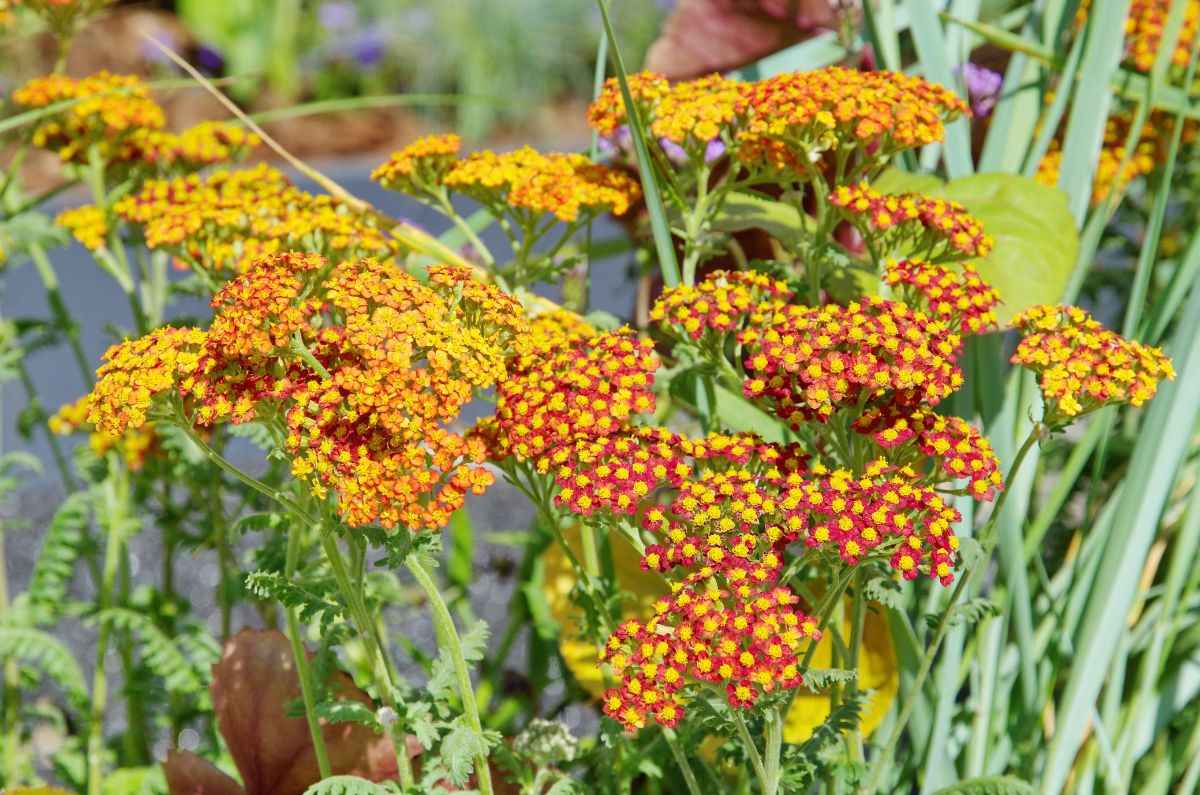
Yarrows can bloom for weeks, and some cultivars can produce a second flush of blooms with deadheading.
When to Plant Yarrows
Ideal Growing Conditions for Yarrows
To grow yarrows successfully, you need the right conditions in your garden. Here are the requirements for sun, water and soil for species of Achillea.
How Much Sun Do Yarrows Need?
You will need to plant yarrow in sunny locations in your flower beds. While you can get away with partial shade for a lot of sun-loving plants, that is not the case for yarrow. A yarrow planted in partial shade may live, but it will have a leggy appearance.
What Type of Soil is Right for Yarrows?
Yarrow likes well-drained soil. And actually, it is a great option for soil types such as dry soils or sandy soils that other plants may not thrive in. It is less likely to flop if you grow it in poor soil rather than rich soil. So, stay away from really fertile soils. Can you get away with clay soil? Yes, if it can drain.
How Much Water Do Yarrows Need?
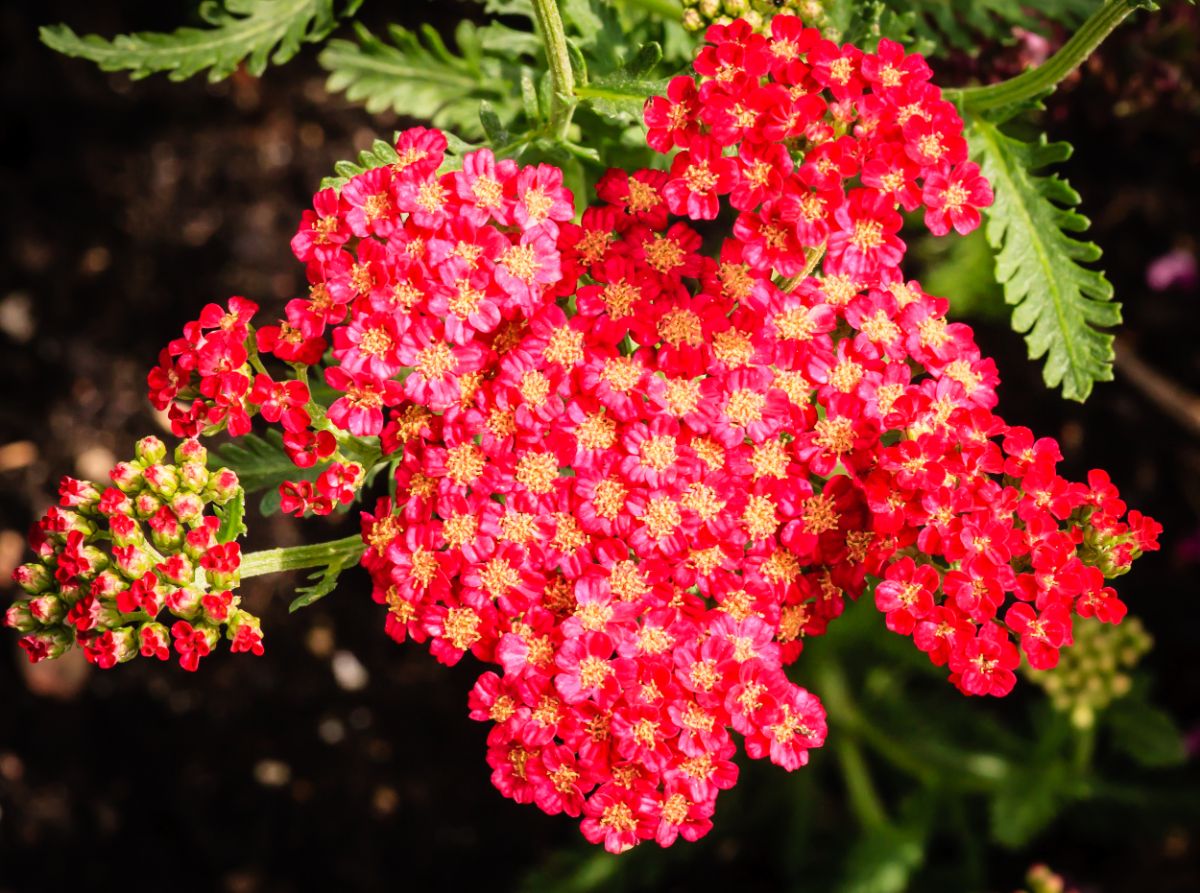
When comes to how much water per week yarrows need, the answer seems to depend on whom you ask.
Almanac says, “Yarrow is very drought tolerant, but if you receive less than 1 inch of rain a week in the summer, remember to water your plants to keep them looking their best.”
By contrast, Santa Clara Valley Water News writes, “As a drought-tolerant plant, the common yarrow does not need much water to thrive. Limit summer watering to no more than once a month. Like most California native plants, once established it will survive with natural rainfall and does not require additional irrigation – perfect for a water-wise garden.”
You probably will need to keep a close eye on your yarrow plants until you figure out exactly how much water they need from you.
How to Plant Yarrows
Now that you know what your yarrows need to grow successfully, you can learn how to plant and propagate them.
For the instructions for container and ground planting, we will assume you have purchased a nursery plant. After that, we will go into propagation instructions for seeds and cuttings.
Container Planting
- If you want to grow yarrow as a potted plant, it all starts with choosing the right container. It is best to go with something large, around 5 gallons minimum. As always, drainage holes are essential.
- Fill the container with normal potting soil.
- Insert your nursery plant into the soil and fill it in.
- Water well.
Now, you need only find a spot for your container. Remember, yarrow does best in sunny locations.
Ground Planting

- Choose a spot for the yarrows.
We already talked about sun, water and soil requirements. But we should also note that it might be worthwhile to plant the yarrows specifically in a sheltered part of your garden. That way, they are less likely to get knocked down by wind and rain.
- Prepare the soil.
In some cases, this might require you to mix in some compost to improve drainage. Add around 2-4 inches.
- Make holes and plant the yarrows. They should be spaced out around 1-2 feet. Backfill the soil when you are done and water well.
Starting Yarrows from Seed
The right time for starting yarrow seeds is 6-8 weeks before you expect the last frost of the year.
- Get some containers with holes, and fill them with regular potting soil.
- Use a spray bottle to get the soil moist.
- Sprinkle the seeds on top of the soil. Add a very thin layer of soil to the top.
- Cover the containers with plastic wrap so the moisture is locked in.
- Move the seeds to a spot where they can stay warm and get plenty of sun.
- Wait for your yarrow seeds to germinate. This process typically takes 2-3 weeks. Maintaining heat and keeping the soil moist will help to move things along. Make sure to regularly pull off the plastic wrap and check if the soil is still moist. Spray it when it starts drying out.
- When the yarrow seeds sprout, take the plastic wrap off so they have room to grow.
- When you want to move the yarrow seedlings outside, you should start by hardening them. The process simply involves taking them outdoors for short periods of time, and then gradually increasing them. The yarrows will thus adjust to life outdoors.
- Plant your yarrows in your flower beds or pots.
Starting Yarrows from Cuttings
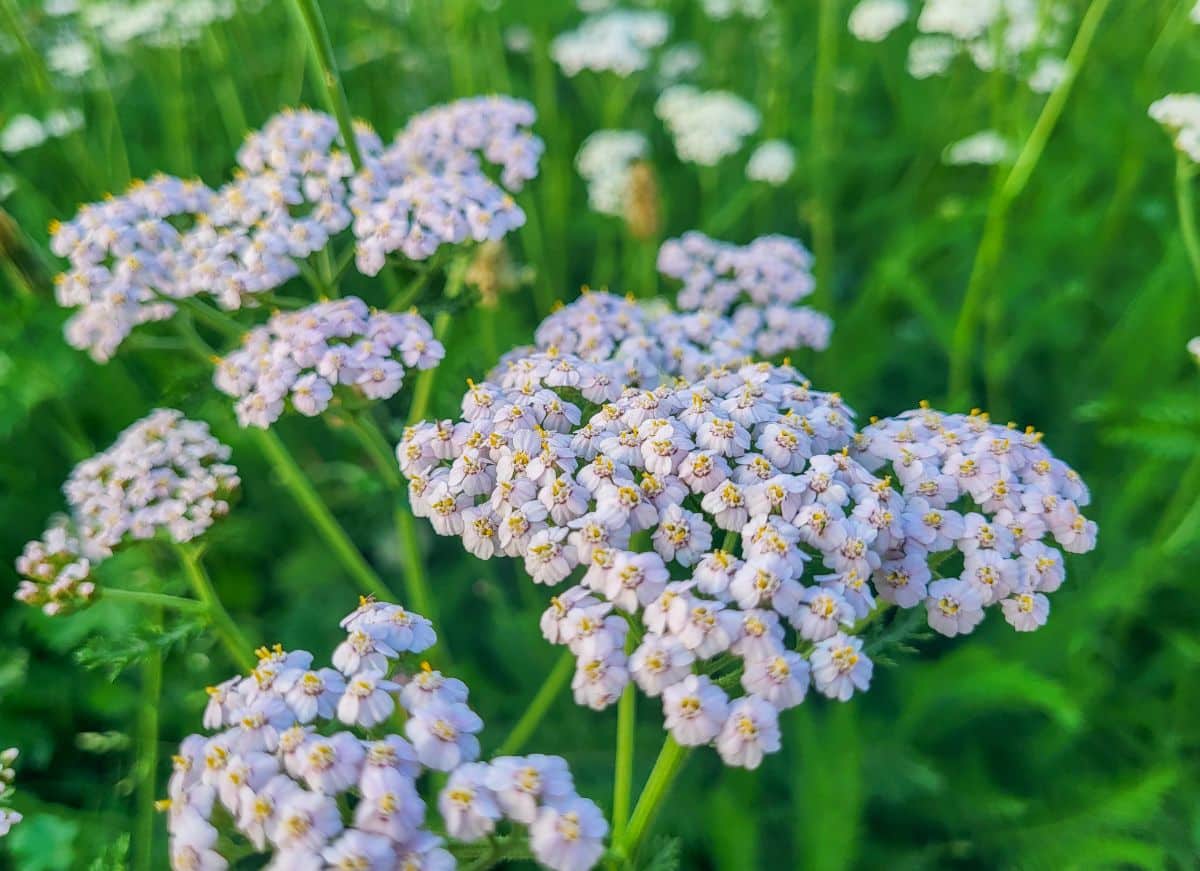
If you do not want to wait around for seeds to grow, another option for propagating yarrow plants is from their cuttings.
- In late spring or summer, take your yarrow cuttings. The ideal cutting is around 6 inches in length, and comes from fresh growth. You want to see a few buds on there.
- Grab a container with holes and fill it with potting mix. Get it moist, but let it drain.
- Make holes in the potting mix using the end of a pencil, chopstick, etc.
- Dip the tips of the yarrow cuttings in rooting hormone (the ends you cut).
- Gently insert the yarrow cuttings into the potting mix, then pat the soil in around them so that they can stand upright.
- To help keep the soil moist, you can cover the containers with plastic bags. But it is vital that the bags not make contact with the cuttings, so they will likely need support from stakes.
- Find a sunny location for the cuttings, preferably within the range of 50 to 60 degrees Fahrenheit.
- Wait for the cuttings to take root. As you do, ensure that the soil remains moist.
- Once the cuttings have rooted sufficiently, you can transplant them into larger containers or your garden beds. Do not forget to harden them.
How to Care for Yarrows
Now that you have learned how to plant and propagate yarrow, it is time to learn how to maintain it. Below, learn how to fertilize, mulch, stake and prune Achillea.
How to Fertilize Yarrows
You will be delighted to know that you do not have to worry about fertilizing yarrow plants at all.
If you are so inclined, you can give them some compost each spring. But in some cases, you might not want to do that, as you could actually end up giving them too much nourishment.
If you overdo it, they may spread more readily than you like.
How to Mulch Yarrows
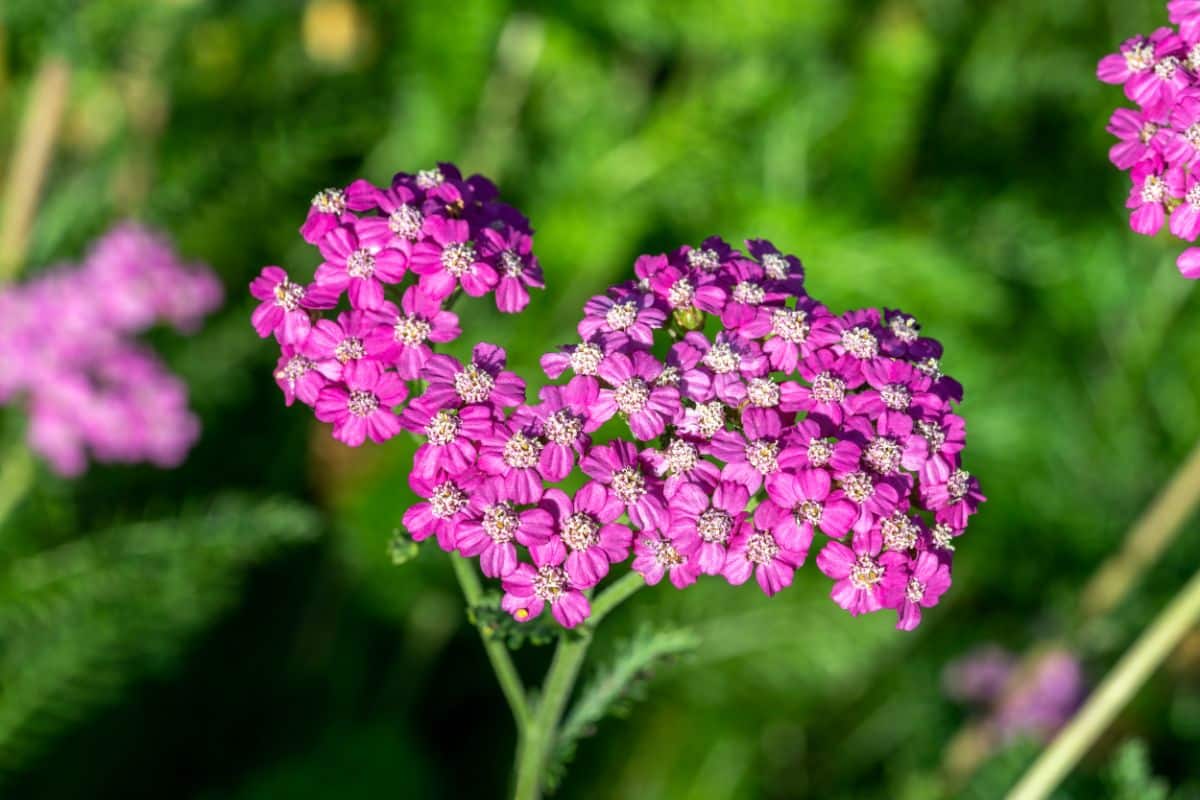
You might not need to mulch your yarrows at all, depending on your situation. But if weeds are an issue, mulch may help keep them at bay. Also, if you have harsh winters, mulch may help to protect the roots.
Most yarrow plants will do fine outside year-round, but if they are in containers, they might not have sufficient insulation. You may overwinter them indoors.
How to Stake Yarrows
Even though yarrows have sturdy-looking stems, staking them can sometimes be necessary. The stems can be more fragile than they appear, and harsh weather can knock them down easily. Also, if you live in a climate that has high heat and humidity, that increases the chances of your yarrows being floppy.
Staking yarrows is no different from staking most other perennials. Just use twine to attach the stems to sticks you drive into the ground. Naturally, it is best if you can do this before heavy wind or rain get to them.
How to Prune Yarrows
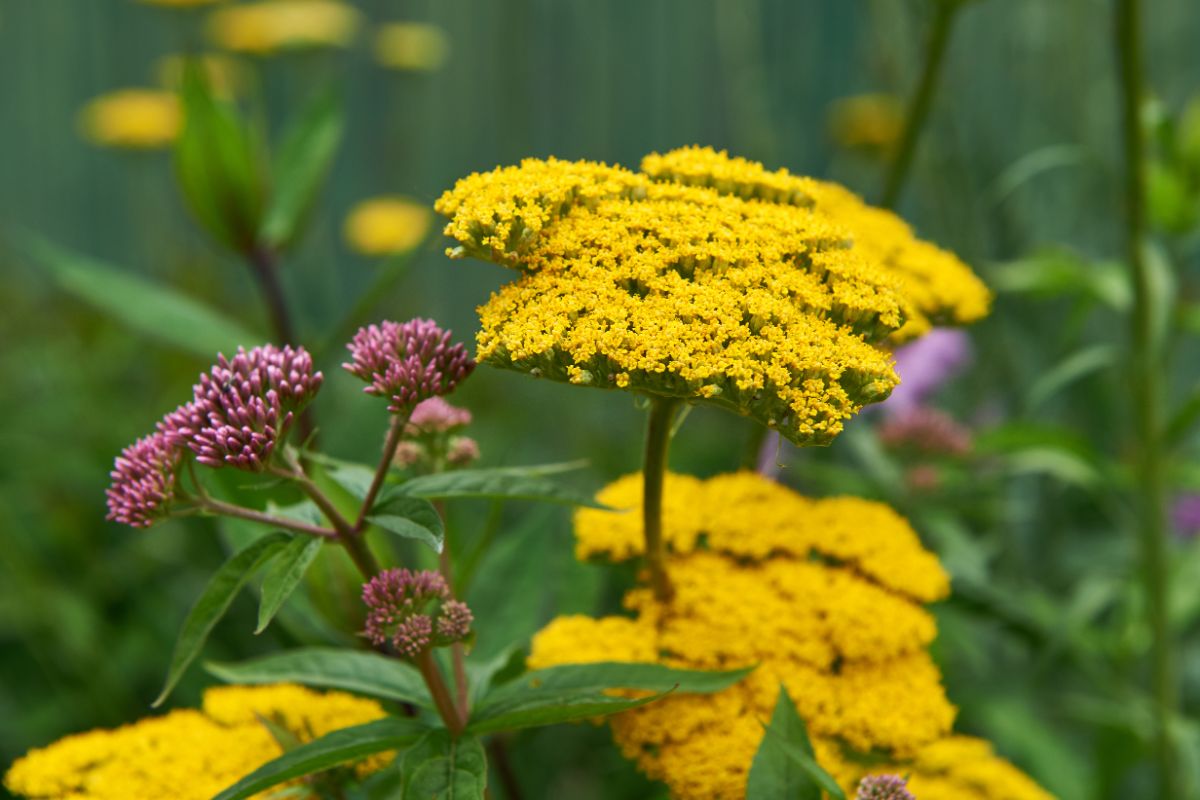
Both deadheading and autumn trimming are important if you want your yarrow plants to thrive.
How to Deadhead Yarrows
Deadheading is well worth your while with yarrows. For one thing, the majority of yarrow cultivars can produce more than one flush of blooms. So, if you deadhead, it becomes more likely you will get to enjoy additional flowers before the season ends.
For another thing, yarrows love to spread, and if they are left to go to seed, you may soon have more of them than you know what to do with. You can prevent that by deadheading them.
Of course, if it is your goal to spread your yarrows, it is better to skip deadheading that season.
When to Cut Back Yarrows
In fall, you should cut your yarrows back. Wait for the first killing frost to arrive, and then trim them down. Leave about 1-2 inches over the soil.
The value in doing this is in removing dead foliage that could be attractive to pests. This increases the chances that your yarrows will return healthy and unmolested in spring.
How to Divide and Transplant Yarrows

To keep your yarrows from getting too leggy looking, you will have to divide them every 3-5 years. Thankfully, they take well to this process and recover quickly.
- Cut down in a circle around the clump of yarrows you wish to divide using a shovel.
- Use the shovel to push under the roots and remove the yarrow clump from the ground.
- Shake the dirt loose gently so you can better see what you are doing.
- Look through the clump for dead stems. If you find them, remove them and discard them. Do not leave them lying around, however, as they may attract insects.
- Divide the clump.
- Make holes in the soil to transplant the newly-divided yarrows.
Are Yarrows Vulnerable to Diseases or Pests?
Most of the time, yarrow plants grow without succumbing to diseases. But they may sometimes come down with a case of root rot, basal rot, leaf spots, powdery mildew, rust or crown gall.
Likewise, yarrow is typically pest-free. Nevertheless, you might sometimes have issues with aphids, spittlebugs, mealybugs, or black vine weevils.
As a bonus, yarrows are often listed as slug-resistant! There is hardly anything in a garden slugs and snails will not munch on, so this is great news.
Guess what also is not fond of yarrow? Mammals like deer and rabbits.
Recommended Planting Combinations for Yarrow
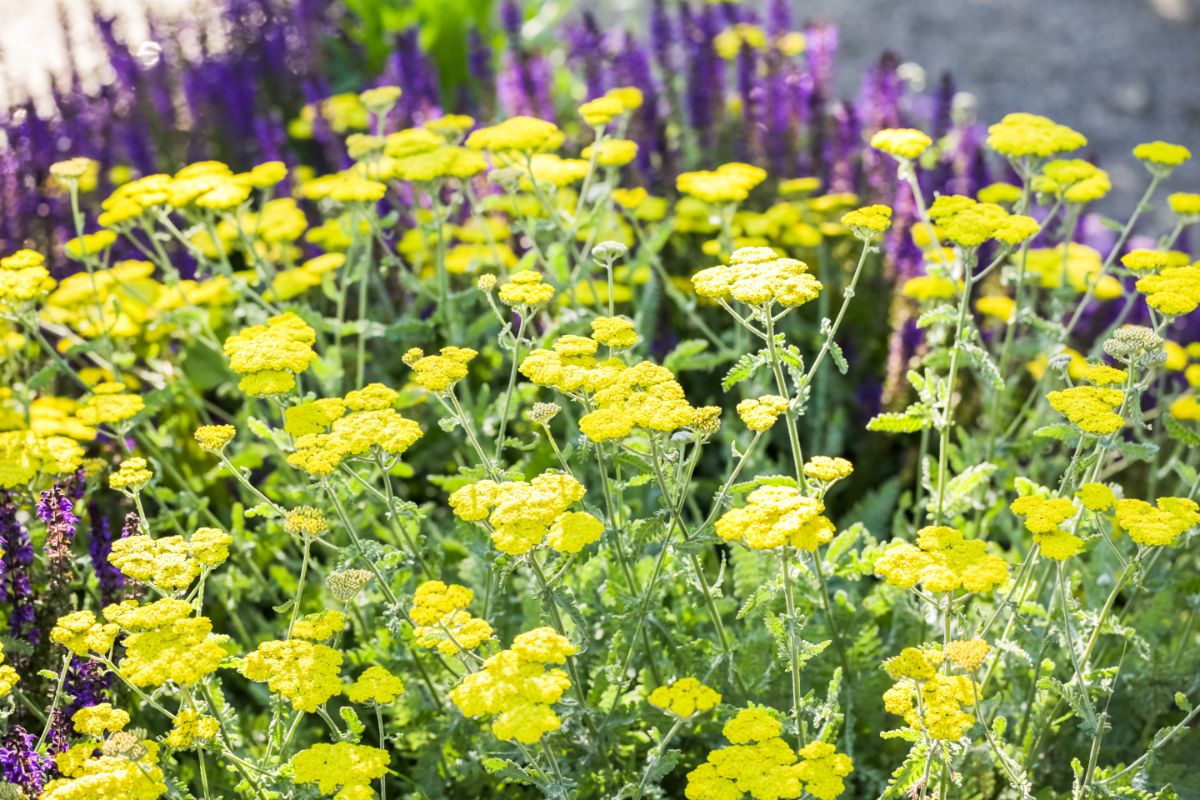
Here are some ideas for what you can plant along with yarrows:
- Black-eyed Susans: These beautiful flowers planted alongside yarrows can make for a sunny medley in your garden beds.
- Coneflowers: Like yarrow, coneflowers are prairie flowers. As a result, the two can go nicely together. They also feature contrasting colors which help both to stand out.
- Fruits and vegetables: A lot of people like to plant yarrow near their fruits and vegetables because of its draw for beneficial insects. Those insects may help to protect the fruits of your labor.
In general, any plants that love the sun and appreciate well-drained soil should make good companions for yarrow.
Frequently Asked Questions About Growing Yarrows
Since mammals and slugs generally avoid eating yarrows, it is most likely that insects are at fault.
Yes, Yarrow plants are poisonous to cats, dogs and horses. Make sure your pet does not try to eat these flowers or any other part of the plant.
Although yarrow is not safe for your pets to consume, you can eat it yourself. In fact, you can make a spice by grinding up the flowers and leaves, both of which are edible. The flavor of yarrow is most similar to anise, licorice or tarragon. So, consider harvesting it and adding it to some of your recipes. Just do not let your cat or dog get into it.
The traditional meaning associated with yarrows in flower arrangements is eternal love.
So, if you want to symbolize your commitment to someone, yarrow can be a great gift, whether as a cut flower or a living plant. And this is such a tough plant that chances are good it will live forever in their garden with minimal maintenance. Just make sure to warn them that it likes to spread.
In some people, yes, yarrow may result in contact dermatitis. If this is the case for you, simply wear garden gloves and work with care when you need to prune your yarrow plants or maintain them in other ways.
Yes, they do. They are quite efficient when it comes to self-seeding. For that reason, you should be diligent in deadheading them if you do not want them to take over.
Note, however, that the spreading capabilities of yarrow are often a good thing. Consider that you may be planting them in poor soil that other plants do not like. Maybe you have been struggling to fill out that part of your garden.
Yarrows may quickly fill the gaps for you, and do so with little in the way of money or work on your part.
Yarrow plants are perennials. You can look forward to their blooms year after year.
Where to Buy Yarrows

You now have answers to your questions about yarrow, and you know the basics of how to grow and care for this hardy perennial. To get started now, click the link below to shop Yarrow cultivars online.

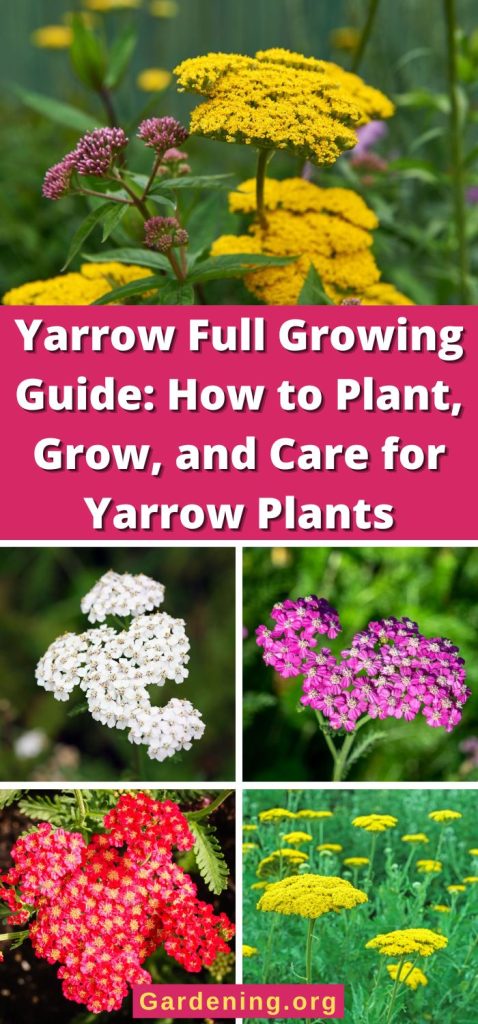
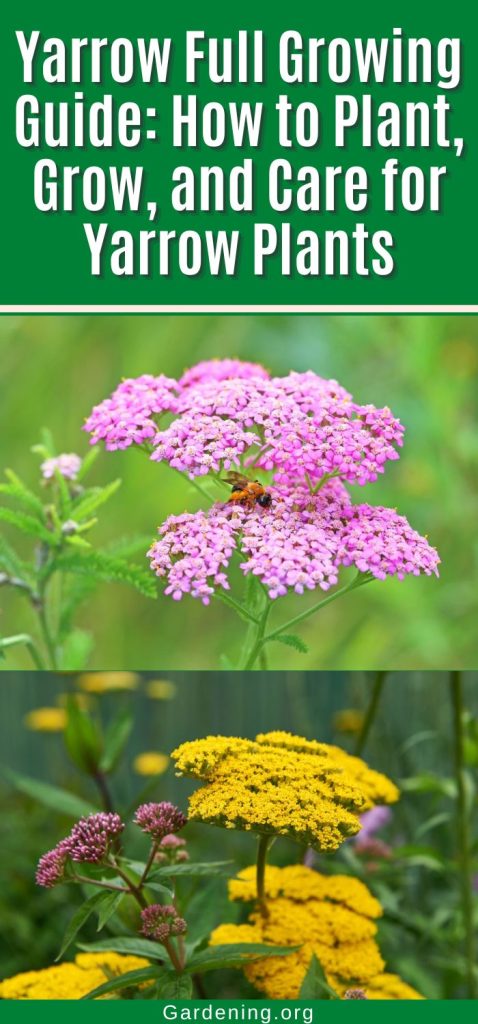
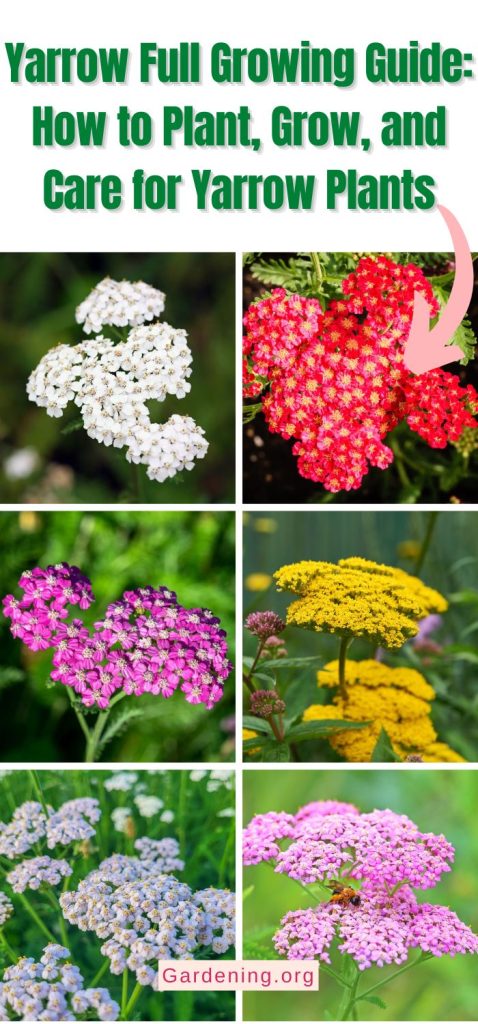
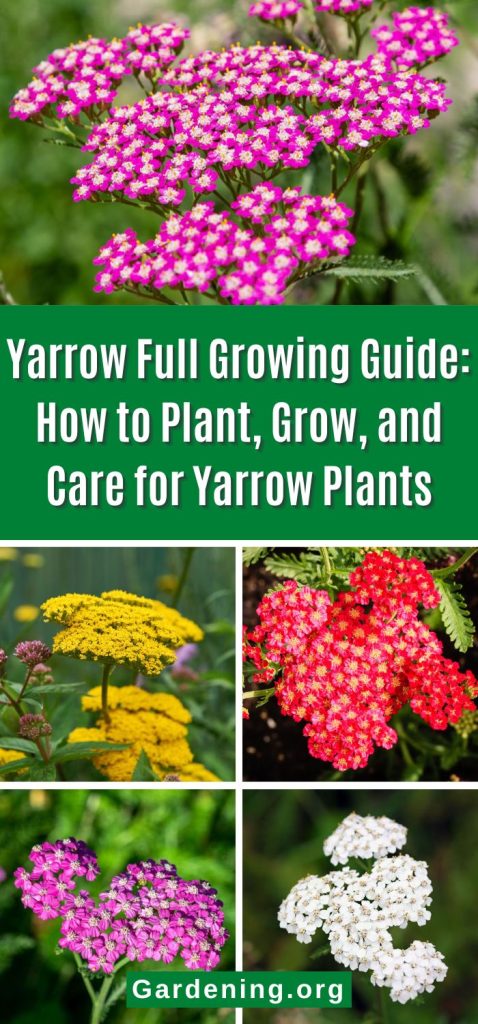

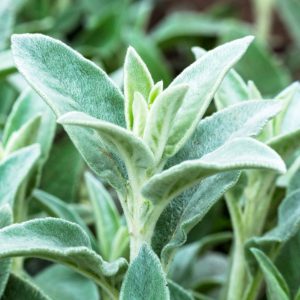


Leave a Reply